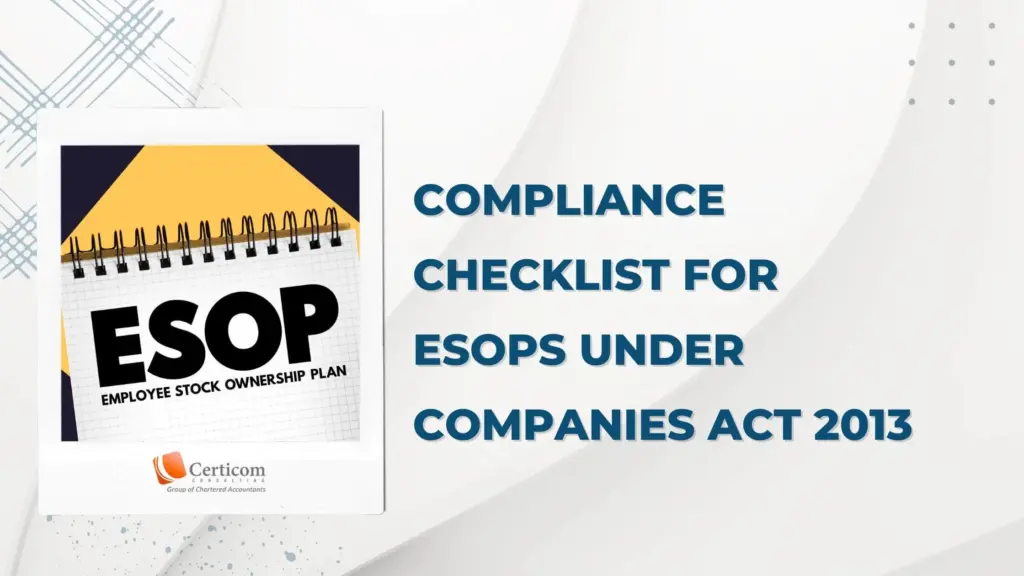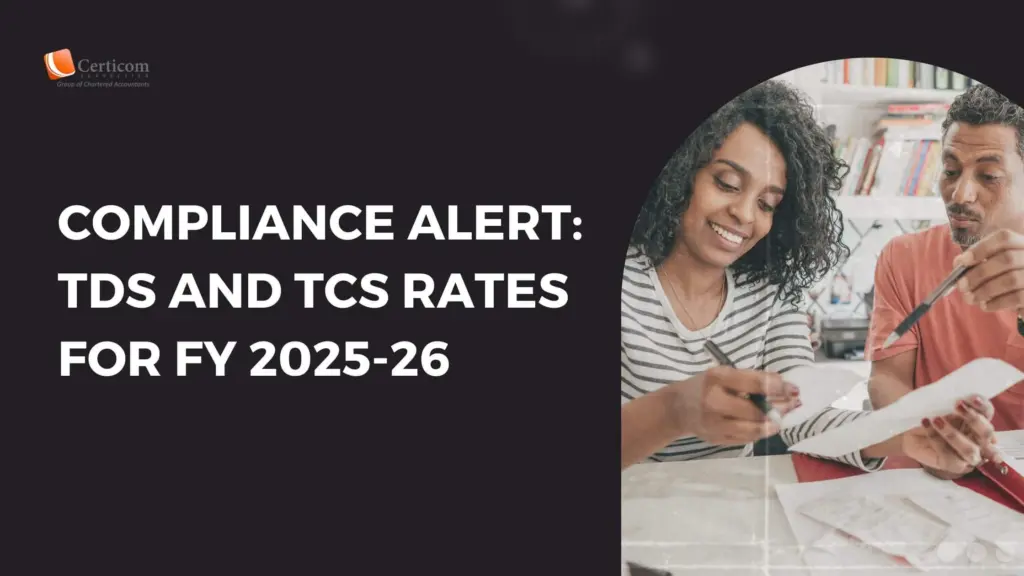Compliance Checklist for ESOPs Under Companies Act 2013

Employee Stock Option Plans (ESOPs) have emerged as a powerful tool for companies to attract and retain talent, especially in start-ups and growth-stage enterprises. By offering employees the opportunity to become shareholders, companies foster a sense of ownership, loyalty, and long-term commitment. ESOPs not only reduce immediate cash outflows by replacing hefty cash rewards but also align employee performance with company growth.
What is ESOP and Who is Eligible?
a) Definition under the Act
Section 2(37) of the Companies Act, 2013 defines Employee Stock Option (ESOP) as the option given to the directors, officers, or employees of a company, its holding, or subsidiary company to purchase or subscribe to shares at a predetermined price on a future date.

b) Eligible Recipients
Employees eligible for ESOPs include:
Permanent employees of the company, whether based in India or abroad.
Directors of the company (excluding independent directors).
Employees of the company’s holding or subsidiary company (domestic or overseas).
Not Eligible:
Promoters or persons from the promoter group.
Directors holding more than 10% of the company’s equity (directly or indirectly through relatives or entities).
Exception: In case of DPIIT-recognized startups, the above disqualifications are relaxed for a period of 10 years from incorporation.
Key Timelines & Terms: Grant, Vesting, Exercise & Allotment
a) Grant Date
The date on which the company formally grants the options to eligible employees.
b) Vesting Period
The time span between the grant date and the point when an employee earns the right to exercise the options. Minimum vesting period: 1 year.
In the case of mergers or amalgamations, prior holding periods under previous ESOPs may be counted towards the vesting requirement.
c) Exercise Period
Post vesting, this is the timeframe within which employees can exercise their vested options.
d) Exercise Price
The price set by the company for employees to acquire the shares. It can be at a discount or premium but must not be below the par value.
e) Lock-in Period
The period during which employees are restricted from selling the allotted shares. The company has discretion in determining this duration.
Step-by-Step Procedure to Issue ESOPs (Direct Route)
Check Articles of Association (AOA):
Ensure the AOA authorizes the issuance of ESOPs. If not, amend the AOA accordingly.Board Meeting:
Convene a Board Meeting (with at least 7 days’ notice) to:Approve the ESOP Scheme.
Approve calling of an Extraordinary General Meeting (EGM).
EGM Notice:
Send the notice with explanatory statements to all stakeholders at least 21 days before the meeting.Shareholder Approval:
Private Companies: Ordinary Resolution.
Public Companies: Special Resolution.
Mandatory Disclosures:
Disclose all details as mandated under the Act and relevant rules in the EGM explanatory statement.Grant of Options:
Once approved, issue the ESOP grants to eligible employees.ROC Filings:
File Form MGT-14 with the Registrar of Companies within 30 days of shareholder resolution.Maintain Registers:
Maintain Form SH-6 – Register of Employee Stock Options. Entries must be made promptly.Share Allotment Post Exercise:
After the vesting period, on receiving exercise requests from employees, convene a Board Meeting to allot shares under the ESOP scheme.

Rights and Restrictions for Employees Holding ESOPs
Resignation or Termination:
Unvested options lapse. Vested options may be exercised within a specified time as per scheme terms.Transferability:
ESOPs are non-transferable and cannot be pledged, mortgaged, or encumbered.In the Event of Death:
All granted options vest immediately and may be exercised by legal heirs or nominees.In the Event of Permanent Incapacity:
All granted options vest immediately upon incapacity.
Read More: Income Tax Return (ITR) Filing for AY 2025-26: Essential Documents You’ll Need
When implemented correctly, ESOPs can significantly boost employee morale, commitment, and performance. They serve as an excellent alternative to high cash compensation while driving employee alignment with company goals. However, the success of an ESOP Scheme hinges on robust legal compliance, clear documentation, and strict adherence to statutory provisions under the Companies Act, 2013 and relevant rules.
Proper planning, timely filings, and transparent communication are critical to avoid legal pitfalls and ensure long-term benefits for both the company and its employees. A well-structured ESOP plan is a strategic investment in talent that can accelerate a company’s growth trajectory.
Related Post
Compliance Checklist for ESOPs Under Companies Act 2013
Income Tax Return (ITR) Filing for AY 2025-26: Essential Documents You’ll Need
Book A One To One Consultation Now For FREE
How can we help? *



